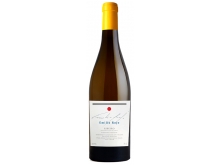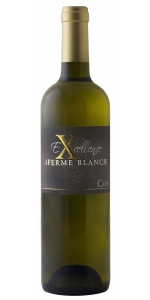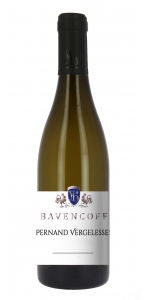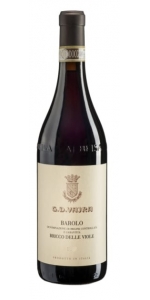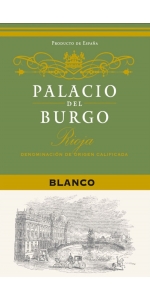Emilio Rojo Ribeiro Blanc 2019
Vilerma Blanco Ribeiro is made from 80% Treixadura, 6% Torrontes, 4% Godello, 4% Albariño, 3% Loureira and 3% Lado
Ribeiro blanco is produced from estate-grown grapes using traditional winemaking.
Pale yellow color with green highlights.
Intense white fruit aromas when young, it develops complex nuances after a few years in the bottle.
In the mouth it is ample, full and pleasant with a long and fruity finish.
Fermentation in Stainless Steel tank at controlled temperature.
Ferme Blanche Cassis Blanc Excellence is made from 50% Marsanne and 50% Clairette.
On the nose, white fruits, citrus zest, hint of vanilla. Velvety well balanced mouth of ripe fruits and minerality.
Pair with trout, Scallop, or better yet lobster would complement this wine perfectly.
Bavencoff Pernand Vergelesses Blanc is made from Chardonnay.
The wine offers a white gold or pale yellow color turning into darker gold with age. It boasts aromas of white flowers, (may, acacia) developing into notes of amber, honey and spices. On the palate it is mineral, harmonious and easy to like.
Aged in new oak barrels (Allier).
Sushi, fresh-water fish in white sauce, and for pasta or a seafood risotto.
Boussey Monthelie Blanc Premier Cru Sur La Velle is made from 100 percent Chardonnay.
The name Monthelie comes from Mont Lyoei, mountain of Bacchus. The "Sur la Velle" plot is located on the eastern edge of Monthélie. It borders the Volnay Clos des Chênes Premier Cru to the east. The vineyards here lie on broadly southeast facing slopes with just enough gradient to achieve good drainage.
The Monthelie Blanc Premier Cru Sur La Velle has a beautiful pale yellow color with green reflections.
It is complex and rich with delicious aromas of white flowers, fresh almonds, lemon and minerality.
The finish is long with a very good balance between the excellent ripeness and the perfect amount of acidity.
We recommend this wine with white meat, fish and seafood.
G.D. Vajra Bricco Delle Viole Barolo is made from 100 percent Nebbiolo.
The Barolo Bricco delle Viole shows the signature verticality of its vineyard. The wine is beautifully layered and - while restrained as it’s always the case in the youth of Bricco delle Viole - it also shows a complexity of layers with purple flowers, sweet spices and mineral tones. The palate is noble, with a refined acid spine and profound tannins that promise a long aging potential.
Among the historical vineyards of Barolo, Bricco delle Viole is the highest and the closest to the Alps. It rises from 400 to 480 meters above sea level, on the Western ridge of the village. Its name, “Hill of Violets”, originates from the flowers that blossom early here due to the perfect south exposure. Up above the fogs, Bricco delle Viole enjoys the earliest sunrise and the last sunset every day. Thanks to its vines dating back to 1949 and -now- 1931, a dramatic diuturnal temperature range and this pure light, Bricco delle Viole generates a sophisticated and profound Barolo DOCG of bright aromatics, chiseled tannins and subtle minerality. 2018 is a vintage that shows many nuances of Bricco delle Viole: beyond the signature verticality of this site, the wine offers high tones laced with mineral nuances and plenty of energy and youth.
Review:
A juicy Barolo, with vibrant acidity and a fluid profile that exudes cherry, raspberry, mown hay, mineral and eucalyptus aromas and flavors. Tight yet long, with excellent potential.
#26 Wine Spectator Top 100 of 2023
The last wine poured at my tasting at the winery is the G.D. Vajra 2019 Barolo Bricco delle Viole. With its high vantage point in the hills west of Barolo, Bricco delle Viole is a world apart in terms of soils (with Sant'Agata marl and fossils) and even harvest times. Slow and careful ripening like the kind that characterizes fruit in 2019 renders a very delicate and ethereal expression with floral tones, wild mint and licorice. This organic wine is solid in build and structure. Indeed, Isidoro Vaira remarks that Nebbiolo tannins have changed since the 1970s and 1980s.
-Wine Advocate 97+ Points
Jeweled in appearance, the 2019 Barolo Bricco Delle Viole may be the best wine I have tried yet from Vajra. Its gorgeous and alluring perfume of fresh roses is followed by a Burgundian, elegant red with incredible length and no harsh edges, fine and present tannins, and beautiful, graceful concentration. It is drinking well now, and I will be trying to get my hands on as much of this as possible. Drink 2025-2045.
-Jeb Dunnuck 97 Points
Palacio del Burgo Rioja Blanco is made from 100% Viura.
The wine shows a brilliant pale yellow color. The nose is elegant and very fruity, with straw and pineapple notes. The taste is intense, being extremely fruity with fresh balanced acidity.
Palacio del Burgo White Wine has been created to accompany all kinds of meals and be the perfect glass of wine to illuminate those memorable low light encounters. This wine is the product of the winemaker's efforts to highlight the fruit. The structure and mouth feel of the wine compliment and balance the fruit.
Enjoy it with white fish dishes and seafood.
Emilio Rojo Ribeiro Blanc is made from 80% Trajadura, 20% others.
Emilio Rojo is produced on the hillside facing the morning sun of the Avia Valley. The vineyard has been tirelessly worked for over 30 years and through these efforts it shaped an iconic landscape that is defined by its perfect terraces and artisanal viticulture.
Emilio Rojo has been designed to transcend time. A wine made in communion with Nature and attached to the roots of the vines that faithfully express the character of the place. Emilio Rojo is the perfect fusion of the man and the vineyard.
Emilio Rojo is a blend of different local varieties (treixadura, lado, godello, caíño blanco, albariño and torrontés) that resulted in a delicate, but tense and lively wine. A complex nose that opens with time, marked by round, citrus fruit notes and floral nuances. An energetic and elegant feel with great depth that leads to a long, full finish. An honest representation of this unique plot.
Review:
Colour: bright straw;Aroma: expressive, ripe fruit, floral, fine lees;Flavour: full-bodied, complex, long, elegant, good acidity;
Guia Penin 96 Points
2019 was the first vintage under the new ownership, a very good year with mild weather and a quiet harvest when they picked the grapes with no stress. The 2019 Emilio Rojo is a blend of all the grapes in the organically and biodynamically farmed (but not certified) vineyard—Treixadura, Godello, Albariño, Torrontés, Loureira, Caíño Blanco, Lado, etc. The grapes were picked in two passes and fermented with indigenous yeasts in stainless steel followed by 14 months in tank. It's 12.5% alcohol and has a pH of 3.42 and 6.9 grams of tartaric acid per liter (acidity). This might be released in November 2022, after almost two years in bottle. It has a strong herbal strike on the nose, spicy and nuanced, elegant and harmonious. It has great balance and a brilliant texture with fine granularity and a long, tasty, almost salty finish. 2,190 bottles and 300 magnums produced. It was bottled in December 2020. They produced less as they moved to organic viticulture, and unfortunately, there will be even less wine from 2020.
-Wine Advocate 95 Points
Viña Mein is a family estate that was originated in the early 90's, when the Alén family acquired the Mein farm. Javier Alén manages the property with extremely care and in few years he has become the reference of the Denomination of Origin. His wines are made exclusively from his vineyards. The focus for these vineyards was to reestablish some of the ancient varietals of Galician white grapes: Treixadura, Godello, Loureira, Torrontes, Albariño and Albilla. As an experimental side project, they also planted 400 vines of Galician red grapes that include Caiño, Mencía and Ferrón.
- back
Pernot Belicard Bienvenue Batard Montrachet Grand Cru is made from 100 percent Chardonnay.
Aromas of white peach, white apple, with a beautiful minerality. Also lighty salty, chalky aromas and some bread and brioche flavors and a hint of vanilla.
Paultry with cream based sauces, French cheese, like camembert, but not to strong, also sea food and fish.
Torello Corpinnat Finca Can Marti Brut 32% Chardonnay, 32% Xarel.lo, 22% Macabeo and 14% Parellada.
The Can Martí estate soils have been formed from sediments from the Garraf Massis, deposited thousands of years ago. One of the most characteristic features of the estate’s soils is the presence of accumulations of calcium carbonate.The movement of water through the soil dissolves the carbonates present and takes them to a certain depth. The continuous repetition of this process has ended up producing the accumulation of these deposits.When these become massive, after thousands of years, they bind together and and form a hard stratum called a petrocalcic horizon. This hard stratum limits the availbility of water to the vine and the production, but is a factor that gives the grape quality.
Straw yellow color, fine and constant bubbles, clean and bright, with golden reflections. The nose reveals a subtle aromatic intensity with fresh and sweet aromas. Honey flowers, citrus notes, white fruit, and balsamic herbs such as fennel.
In the mouth the acidity is well balanced, with delicate bitter notes to the finish and a set of ripe fruits and balsamic nuances.

